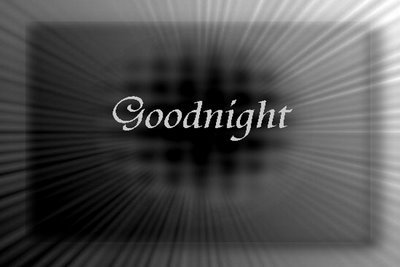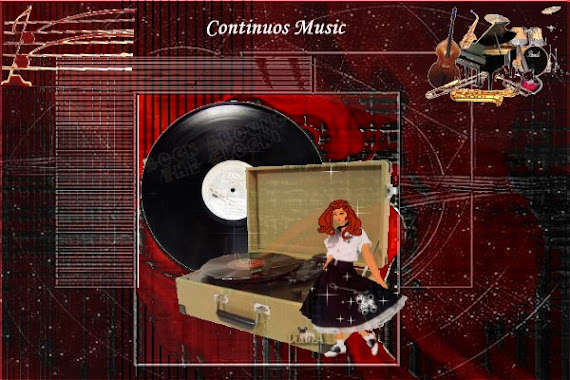Free website - Wix.com Many years ago, while I was a student at Penn State University, the local radio station used to play a song that I became quite fond of. It was not the usual college type of song but had a very inspirational message enhanced by the wonderful voice of Jan Pierce. I hope it gives you the same kind of lift..... Click the Bluebird.....
Friday, March 30, 2007
Thursday, March 29, 2007
.....Shhhhhh - God is listening.....
KIDS IN CHURCH
"Our Father, Who does art in heaven, Harold is His name. Amen."
A little boy was overheard praying: "Lord, if you can't make me a better boy, don't worry about it. I'm having a real good time like I am."
After the christening of his baby brother in church, Jason sobbed all the way home in the back seat of the car. His father asked him three times what was wrong. Finally, the boy replied, "That preacher said he wanted us brought up in a Christian home, and I wanted to stay with you guys."
One particular four-year-old prayed, "And forgive us our trash baskets as we forgive those who put trash in our baskets."
A Sunday school teacher asked her children as they were on the way to church service, "And why is it necessary to be quiet in church?" One bright little girl replied, "Because people are sleeping."
A mother was preparing pancakes for her sons, Kevin 5, and Ryan 3. The boys began to argue over who would get the first pancake. Their mother saw the opportunity for a moral lesson. "If Jesus were sitting here, He would say, 'Let my brother have the first pancake, I can wait.' Kevin turned to his younger brother and said, "Ryan, you be Jesus!"
Posted by
The Ivory Tower
at
3/29/2007 11:21:00 PM
![]() 0
comments
0
comments
Wednesday, March 28, 2007
Tuesday, March 27, 2007
Monday, March 26, 2007
Sunday, March 25, 2007
..........Cajun chiropractice..........
Posted by
The Ivory Tower
at
3/25/2007 07:33:00 PM
![]() 0
comments
0
comments
Saturday, March 24, 2007
..........Goodnight from Diamond Head..........
http://www.geocities.com/chief_waltz/Hawaiian/song_of_the_islands.asf
http://www.geocities.com/chief_waltz/Hawaiian/love_song_of_kalua.asf
http://www.geocities.com/chief_waltz/Hawaiian/aloha_oe.asf
http://www.geocities.com/chief_waltz/Hawaiian/drowsy_waters.asf
http://www.geocities.com/chief_waltz/Hawaiian/my_isle_of_golden_dreams.asf
Posted by
The Ivory Tower
at
3/24/2007 12:56:00 AM
![]() 0
comments
0
comments
I'd like to teach the world.........FIREFOX
Posted by
The Ivory Tower
at
3/24/2007 12:21:00 AM
![]() 0
comments
0
comments
..........It's the real thing..........
Posted by
The Ivory Tower
at
3/24/2007 12:00:00 AM
![]() 0
comments
0
comments
Friday, March 23, 2007
..........Tom and Jerry Cartoons..........
Posted by
The Ivory Tower
at
3/23/2007 04:53:00 PM
![]() 0
comments
0
comments
Thursday, March 22, 2007
Wednesday, March 21, 2007
,,,,,,,,,,Beauty is as beauty does..........
Posted by
The Ivory Tower
at
3/21/2007 04:07:00 AM
![]() 0
comments
0
comments
..........Maxine's math problem..........
Posted by
The Ivory Tower
at
3/21/2007 02:51:00 AM
![]() 0
comments
0
comments
..........The path to slumberland..........
Posted by
The Ivory Tower
at
3/21/2007 12:49:00 AM
![]() 0
comments
0
comments
Tuesday, March 20, 2007
..........gives "Lover's Leap" a new meaning..........
Posted by
The Ivory Tower
at
3/20/2007 10:08:00 PM
![]() 0
comments
0
comments
..........Scenic Alaskan train route..........
Posted by
The Ivory Tower
at
3/20/2007 02:55:00 PM
![]() 0
comments
0
comments
..........Oriental springtime..........
Posted by
The Ivory Tower
at
3/20/2007 09:50:00 AM
![]() 0
comments
0
comments
Monday, March 19, 2007
...........Once again it is time...........
Posted by
The Ivory Tower
at
3/19/2007 11:51:00 PM
![]() 0
comments
0
comments
Sunday, March 18, 2007
..........Do you remember - Mummenschanz..........
Posted by
The Ivory Tower
at
3/18/2007 03:08:00 PM
![]() 0
comments
0
comments
Saturday, March 17, 2007
..........The same old shillelagh..........
What I have mistakenly called a shillelagh all these years was once a very popular weapon in 19th-century London. Very handy to have - but not something the Irish would have used at that time, or earlier. Their weapon of choice would have been a cane made from oak, blackthorn, ash or holly.Known by many names, including bata in Gaelic - which means, fighting stick - the original cane gets its name from the Shillelagh Forest in County Wicklow. The forest was once famous for its massive stands of fine oaks. Sadly, most of them were cut down and exported and, when you see how few trees remain in Ireland, there's little comfort in knowing that many famous buildings in Western Europe were built with Irish imported oak.
Curiously, it was from the pen of an English writer who, on seeing an oak cane and knowing where it came from, coined the term Shillelagh. Eventually, it became synonymous for any Irish walking stick.Sometimes, the knob on the end was hollowed out and filled with molten lead; this was known as a "loaded stick." However, in sticks made of blackthorn, the knob was actually the root and it would not have been necessary to "load" it because it could pack a significant whack!The bark is left on for added toughness and often a metal ferrule is secured at the end opposite of the knob. To keep the wood from splitting during the drying process, sticks were often buried in a manure pile, or smeared with butter and placed in the chimney to cure.
: http://www.shapirobernstein.com/mbr/shapiro_playsong.asp?recnum=5760
Posted by
The Ivory Tower
at
3/17/2007 01:18:00 PM
![]() 0
comments
0
comments
..........Well it is still my favorite..........
Corned Beef & Cabbage - The Feeding of A Myth
What's the national dish of Ireland? Corned Beef and Cabbage, you say? Since March has undoubtedly become "Irish Awareness Month", we thought it would be fun to explore the truth behind yet another Irish myth.
So, what meat did the Irish eat? History tells us that pork was always the favorite. In ancient times, cattle were prized as a common medium for barter. The size of one’s herd was an indication of status, wealth and power -- hence all the stories of tribal chieftains and petty kings endlessly rustling one another’s cattle.Long after the cattle raids were a distant memory, the majority of Irish people still didn’t eat very much beef because it was much too expensive and those who could afford it, consumed it fresh.
Corned Beef again surfaces in writings from the late 1600's as a specialty, a costly delicacy - expensive because of the salt - and made to be eaten at Easter, and sometimes at Hallowe'en. Surprising to this writer, was learning what the term "corn" really means. The name comes from Anglo-Saxon times when meat was dry-cured in coarse "corns" of salt. Pellets of salt, some the size of kernels of corn, were rubbed into the beef to keep it from spoiling and to preserve it. Today, brining -- the use of salt water -- has replaced the dry salt cure, but the name "corned beef" is still used, rather than "brined" or "pickled" beef.
But back to the myth: It was in the late 19th century that it began to take root. When the Irish emigrated to America and Canada, where both salt and meat were cheaper, they treated beef the same way they would have treated a "bacon joint" at home in Ireland: they soaked it to draw off the excess salt, then braised or boiled it with cabbage, and served it in its own juices with only minimal spicing - may be a bay leaf or so, and some pepper.
This dish, which still turns up on some Irish tables at Easter, has become familiar to people of Irish descent as the traditional favorite to serve on Saint Patrick’s Day. Certainly, there will be many restaurants in Ireland that will be serving Corned Beef and Cabbage on March 17th , but most of them will be doing so just to please the tourists.
http://www.eirefirst.com/midimusic/ill_take_you_home_again_kathleen.mid
Posted by
The Ivory Tower
at
3/17/2007 04:19:00 AM
![]() 0
comments
0
comments
...........Even you can be Irish today..........
Posted by
The Ivory Tower
at
3/17/2007 03:41:00 AM
![]() 0
comments
0
comments
Friday, March 16, 2007
.....If your life is getting a bit dull - try this.....
Posted by
The Ivory Tower
at
3/16/2007 05:42:00 PM
![]() 0
comments
0
comments
Thursday, March 15, 2007
..........In case you were wondering..........
Posted by
The Ivory Tower
at
3/15/2007 01:42:00 AM
![]() 0
comments
0
comments
Wednesday, March 14, 2007
...Everyone's welcome at the leprechauns party...
http://www.twilightbridge.com/festivals/patrick/music/barry/kilgary.mid
http://www.twilightbridge.com/festivals/patrick/music/barry/jpmare.mid
http://www.twilightbridge.com/festivals/patrick/music/barry/kesh.mid
http://www.twilightbridge.com/festivals/patrick/music/barry/market.mid
http://www.twilightbridge.com/festivals/patrick/music/barry/blaksmth.mid
Posted by
The Ivory Tower
at
3/14/2007 03:06:00 AM
![]() 0
comments
0
comments
.........On second thought Maxine says..........
Posted by
The Ivory Tower
at
3/14/2007 12:32:00 AM
![]() 0
comments
0
comments




























































